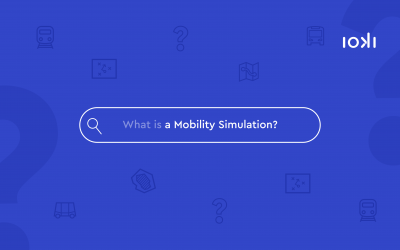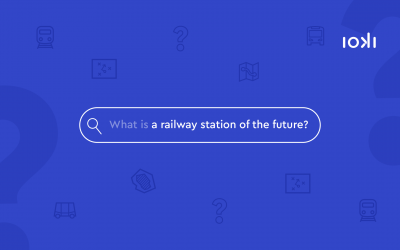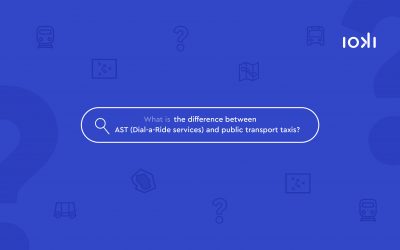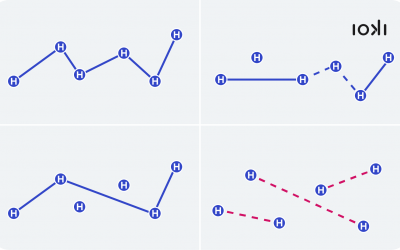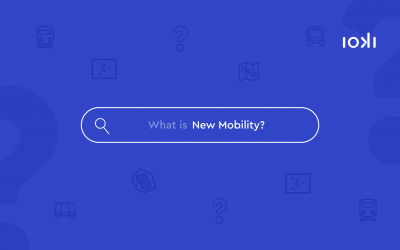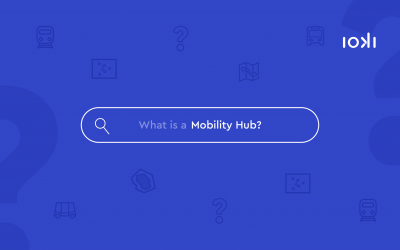Mobility simulations are digital tools that show how people move around a city or region. In Germany, with its population of over 80 million people, traffic is so complex that we can never capture it completely. Mobility simulations help us build a comprehensive picture despite this challenge.
What is a railway station of the future?
Railway stations of the future (known in German as ‘Zukunftsbahnhöfe’) are modern mobility hubs that go far beyond the classic function of a train station. Deutsche Bahn is developing stations across Germany into these innovative mobility hubs as part of its ‘Zukunftsbahnhof’ programme, focused on three key characteristics: customer-oriented for greater attractiveness, high-performing to accommodate more travellers, and sustainable in construction and operation. As part of this targeted modernisation programme, selected stations are being developed into attractive transport hubs according to uniform standards.
What is the difference between dial-a-ride services and public transport taxis?
Flexible mobility solutions, such as demand-responsive transport (DRT), are becoming increasingly important – particularly in areas where traditional scheduled bus services are not financially viable. Two terms often used in the context of DRT are “dial-a-ride” and “public transport taxi”. But what exactly distinguishes these services?
Connected mobility through mobility hubs: Stuttgart’s vision for the future
“How can we holistically shape the future of mobility in Stuttgart?” The state capital Stuttgart is addressing this question by planning an interconnected network of mobility hubs. The goal is to drive forward the mobility transition, contribute to climate protection, and improve the quality of life for residents.
Flexible Forms of Operation in Public Transport: From Classic Routes to Flexible On-Demand Models
On-demand services complement and optimise public transport: without timetables, digitally controlled, and perfectly tailored to demand. They offer flexible mobility for both urban and rural areas while promoting a more environmentally friendly future for public transport.
What is line-based DRT?
Line-based demand-responsive transport (DRT) combines the benefits of traditional scheduled services with the flexibility of on-demand transport. Unlike conventional bus services with fixed schedules and stops, this type of service adapts to passenger demand.
What is GTFS-Flex?
GTFS stands for General Transit Feed Specification and is an open data standard. Transport companies around the world use this standard to provide their traffic data on routes, timetables, tariffs, but also real-time information. This allows passengers to see if a bus is delayed and is not limited to a local app when searching for a public transport connection.
What is… New Mobility?
“New Mobility” is often referred to as “smart mobility” and is a collective term for many innovations relating to technology and mobility. These new mobility services combine digitalisation with traditional mobility and use the advantages of the internet. New mobility services include bike sharing, demand-responsive transport, ride hailing and smart parking.
Senior-friendly public transport: What should age-appropriate public transport look like?
Europe’s population is ageing. in 2019, more than a fifth (20.3 per cent) of the EU-27 population was at least 65 years old. And the trend is still rising. Demographic change is a challenge for public transport, but it can also be an opportunity for growth with a customised mobility offer for senior citizens. After all, if older people no longer drive, they are increasingly dependent on public transport in order to continue to actively participate in social life.
Perspectives from Mackenzie Banker
Smart mobility solutions use technology and innovation to improve mobility for everyone. Similarly, Smart Cities use innovative concepts and technological advancements to improve life in urban spaces. Both enable us to achieve the vision of more human-oriented and efficient places in cities.
Mobility Turn now! Mobility of the future in Brandenburg
In this edition of the blog series “Mobility turn now!”, we are focusing on the largest of Germany’s eastern federal states relating to area: Brandenburg. In addition to the Spreewald cucumbers and unspoilt nature, Brandenburg has a lot to offer in terms of new mobility and Smart Cities.
What is … a Mobility Hub?
Mobility Hubs, also known as Mobility stations, are publicly accessible locations where various modes of transport and sharing services converge. These can be S-Bahn (suburban train) and subway stations in an urban context, or even a bus stop in the countryside where rental bikes are available or important bus routes intersect. At these stations, people can easily switch from one mode of transport to another. Mobility hubs promote efficient and sustainable mobility by offering various mobility services, otherwise known as Mobility-as-a-Service (MaaS). The concept can be expanded from a simple bus stop to large Mobility Hubs, for example, with a combination of on-demand transport, car sharing stations, or e-scooters.
Newest article

Digital Mobility on the Move – Insights from the Smart Country Convention 2025
Imagine a city where citizens purchase their bus ticket directly through a service app, book an on-demand shuttle, and effortlessly switch between various modes of transport – without needing additional apps or complex logins. This vision was presented by our colleague Maximilian Rütten and Linus Frank from our partner Vesputi at the Smart Country Convention (SCCON) 2025.

